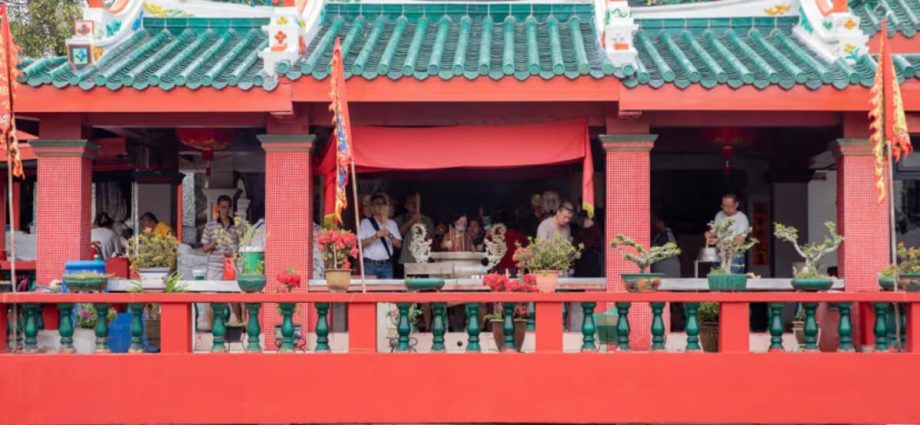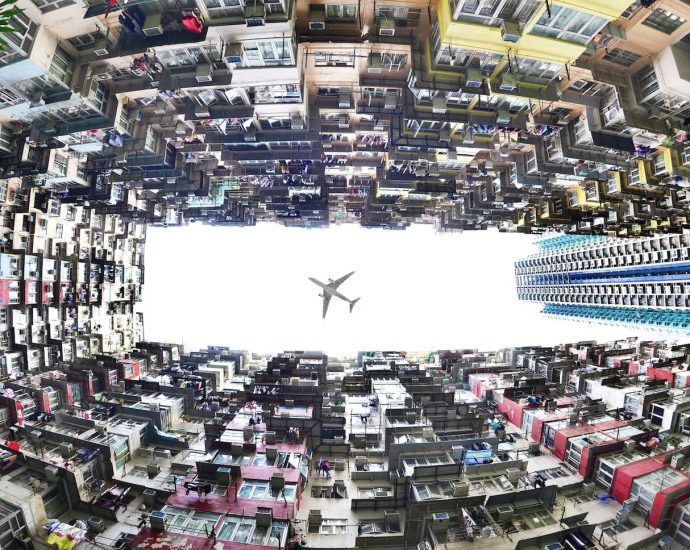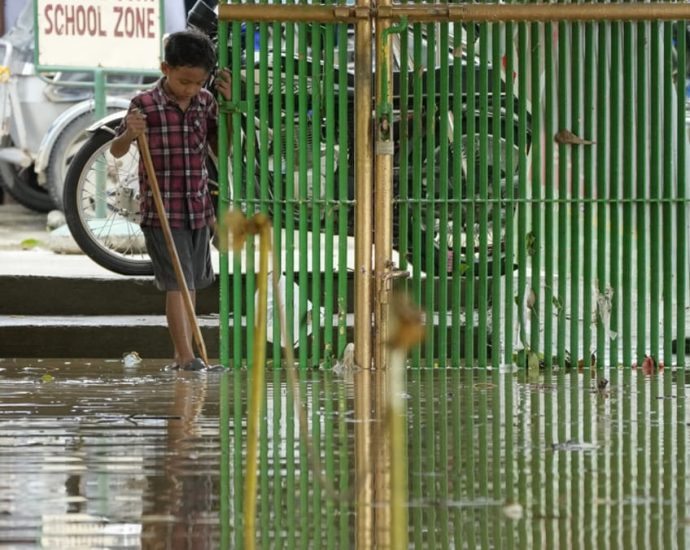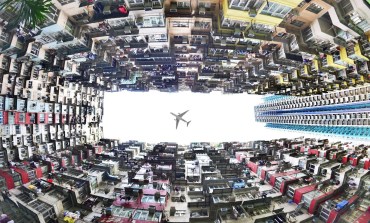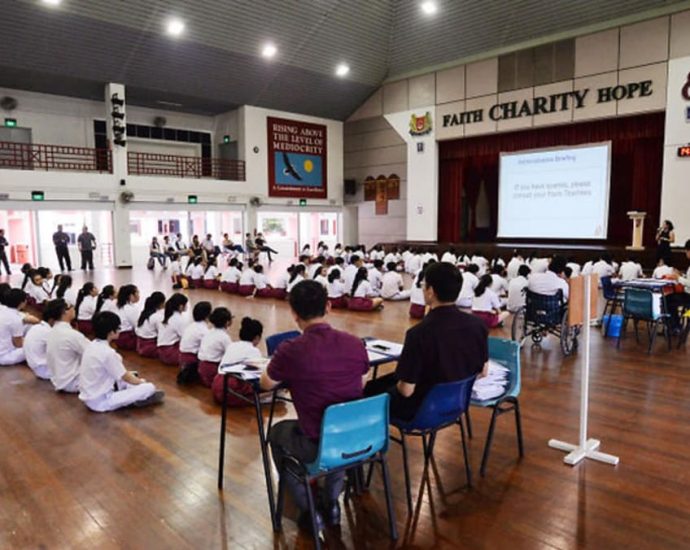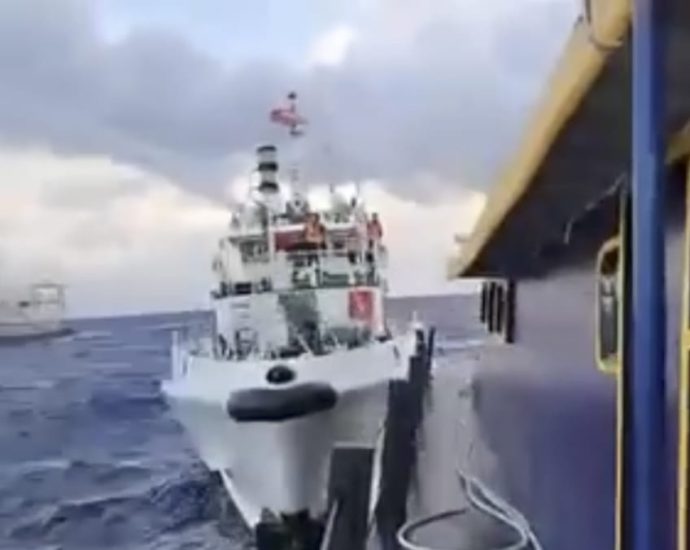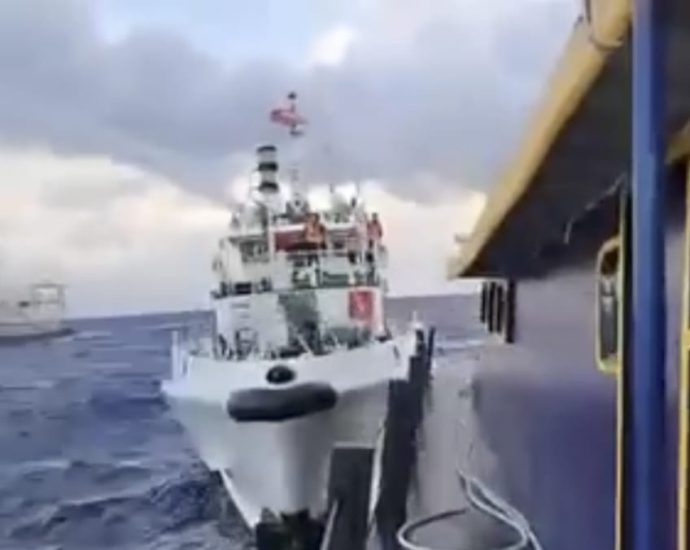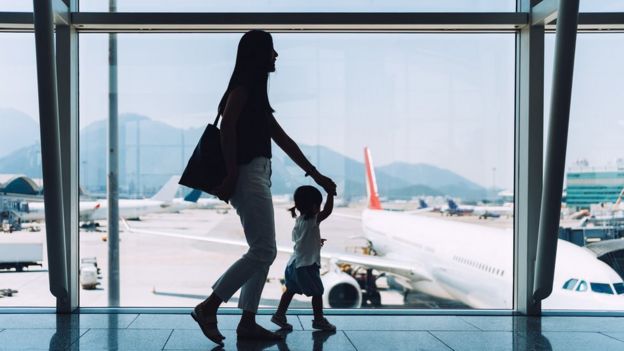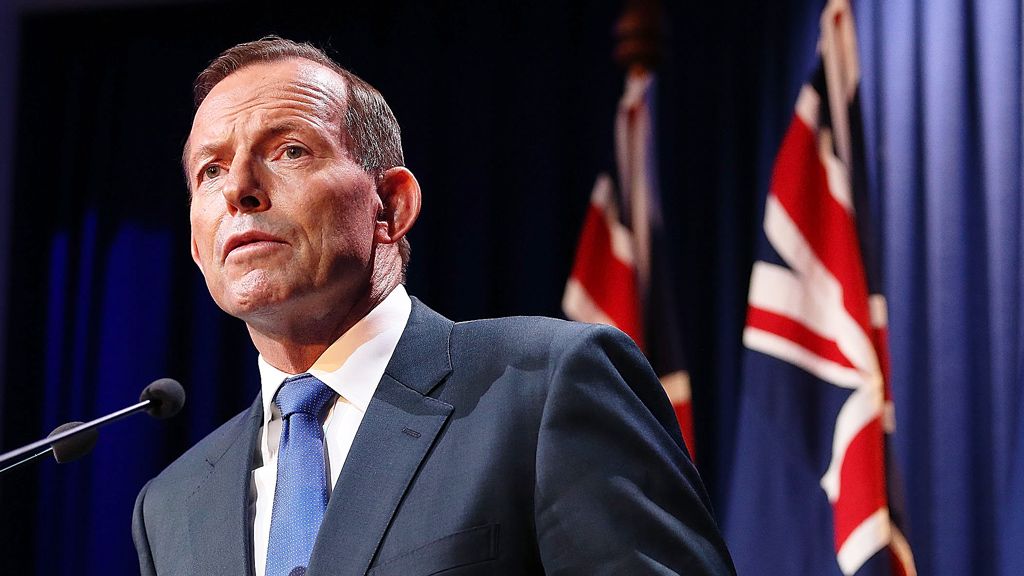Plans for Southern Islands to be fully self-reliant for water, power needs, after Kusu Island success

It also helps to cut 96 metric tons of carbon emissions annually.
The project is a tie-up between Nanyang Technological University (NTU) and the Singapore Land Authority (SLA), which manages the island.
“We found that these areas, these lagoons, were quite good sites for us (to install the solar panels), so that we don’t occupy useful land,” Dr Narasimalu Srikanth, programme director at the Energy Research Institute in NTU, told CNA.
He added that as the lagoons help in water transpiration, installing the solar panels there also helps to cool them down.
This makes them between 10 to 15 per cent more energy efficient than land-based solar panels, said Dr Srikanth.
FOR PEOPLE AND THE ENVIRONMENT
The solar panels, which occupy an area about the size of two basketball courts, were installed with the environment in mind.
Their legs, for instance, are covered with marine-safe paint, and are constructed long enough so that fishes and turtles can swim freely beneath them.
The power generated from the solar panels is also stored in batteries and used for the island’s jetty, toilets, temple and main desalination system.
Technician jailed over accident that saw trapped worker bleed to death in lift shaft

SINGAPORE: A lift technician whose negligence contributed to a construction worker bleeding to death in a lift shaft was jailed for five months on Monday (Dec 11).
Wong Ser Yong, a 34-year-old Malaysian, pleaded guilty to one count of a negligent act contributing to the death of Mr Hossain Mohammad Sahid under the Workplace Safety and Health Act.
The court heard that Wong was a lift technician for TK Elevator, which was hired by the managing agent of a seven-storey building at 450 North Bridge Road to repair loose panels in the interior of a passenger lift.
TK in turn hired Decor Engineering, a lift contractor registered with the Building and Construction Authority (BCA), to perform the panel repair works.
Mr Hossain, 29, was employed by Decor as a construction worker and was not a trained lift technician.
On the morning of Feb 27, 2021, Wong met Mr Hossain and his colleague at the building to repair the lift’s interior panel.
Mr Hossain and his colleague were tasked by their project manager to tighten the loose interior panels, while Wong was to provide the two Decor workers access to the work area and to control the positioning of the lift.
The lift had been shut down by another technician, and was positioned between the first and second levels. When the trio got to the lift lobby on the second floor, Wong opened the lift landing door and claimed that the lift was in “Inspection” mode.
FAULTY BUTTON
He tested the “up” and “down” buttons on the lift control box and realised that the “up” button was faulty as it had been jammed.
When Wong told Mr Hossain about the faulty button, Mr Hossain asked if Wong could control the lift from the lift motor room on the rooftop.
Mr Hossain also suggested communicating through their mobile phones, with Mr Hossain telling Wong “up” or “down” to move the lift and “oop” to stop it.
Wong agreed and headed to the motor room while Mr Hossain went to the top of the lift car.
At about 11am, Wong informed Mr Hossain that he would switch the lift to “Inspection” mode first, before Mr Hossain switched it to “Normal” mode.
However, shortly after giving this instruction, Wong heard Mr Hossain shouting loudly over the phone.
Investigations later revealed that Mr Hossain had most likely switched the control box on top of the lift car to “normal” mode before Wong had switched the lift’s controller switch in the lift motor room to “Inspection” mode.
This meant that both modes were in “Normal”, resulting in the lift ascending automatically.
Wong immediately shut down the power of the lift system and went to the building’s third floor, where he saw that Mr Hossain’s left arm had been caught between the lift’s guide rail bracket and the edge of the lift car.
Singapore Civil Defence Force (SCDF) officers arrived at the scene at 11.40am to begin a rescue operation.
According to a coroner’s inquiry held in May last year, SCDF found that Mr Hossain’s ribcage, left arm and left leg were trapped. There was a deep cut in his left arm, which was bleeding.
SCDF considered various options including amputation to extricate Mr Hossain, but they were impeded by the confined space.
Mr Hossain died at the scene at about 3.45pm.
He was later certified to have died from bleeding due to blunt force trauma to his left arm.
WONG’S FAILURES
The court heard that Wong had a duty to handle all lift operations, including controlling lift movement.
On that day, he was required to do a job hazard analysis, an established safety procedure laid out by TK for technicians, but did not do so.
He was also not aware of the working method that Mr Hossain had been briefed on.
When Wong discovered the faulty “up” button on the car top control box, he should have stopped all works from proceeding, the prosecutor said. The correct procedure would have been to repair the faulty button before starting the panel repair works.
Leaving Mr Hossain alone to work on the top of the lift car was also not in compliance with TK’s safety requirement and internal safety procedures.
Wong also should have prevented any operation of the switches of the lift control, as Mr Hossain was not a competent lift specialist, said the Ministry of Manpower (MOM) prosecutor.
Only trained lift technicians should handle the lift operations for the contractor, she said.
Wong admitted that his negligent acts had contributed to Mr Hossain’s death.
For a negligent act contributing to a person’s death in a workplace, he could have been jailed for up to two years, fined up to S$30,000 (US$22,333), or both.
Indonesia thinks its nickel export ban is working
Economists have long advised Indonesia to reduce its reliance on commodity exports and promote economic diversification. The Indonesian government has been pursuing this through the establishment of special economic zones and tax holidays.
But in 2020, the Covid-19-induced recession led to a more draconian diversification approach with a ban on the export of all unprocessed nickel.
Using an export ban as an industrial policy instrument is controversial since it creates market distortions and its goals must be carefully stated and measured.
Nickel is an important material for the production of most rechargeable batteries and its significance in the global supply chain has increased dramatically with the pursuit of global net-zero ambitions.
As Indonesia is the largest producer of nickel ores, President Joko Widodo (Jokowi) is sanguine about leveraging this advantage to increase the domestic value added from the nickel ore export ban.
Domestic value creation is cited as Jokowi’s primary goal. On paper, the results of the export ban are striking. Almost US$14 billion has been invested in nickel smelter capacity in Indonesia.
Maluku Utara and Sulawesi Tengah, Indonesia’s nickel downstreaming provinces, experienced double-digit growth rates in 2021, driven primarily by investment in the industry. Jokowi has highlighted how the ban has seen a 30-fold increase in the value of Indonesia’s nickel-related exports.
Calculating domestic value added is not straightforward. Comparing nickel ore export values and their derivatives is misleading since downstream products also embody the cost of energy needed for production and other inputs.

Because Indonesia was one of the largest nickel ore exporters, the ban has led to an increase in the international price of nickel and its derivatives. Investors in smelters now enjoy a much cheaper domestic price for nickel ore and a much higher value for exports of nickel metal.
On top of the tax holidays and cheap energy, which are crucial for capital and energy-intensive extraction, smelters are effectively subsidized by the government.
One may justify a reduction of short-term efficiency for future gain. The ultimate aim of nickel downstreaming is to position Indonesia as a major producer of electric vehicles (EVs), and achieving this may warrant a short-term loss. But the details matter and the challenges are apparent.
Most of the nickel mined in Indonesia is more suitable for producing stainless steel than renewable batteries. General smelter incentives and the nickel export ban skew investment towards stainless steel production instead of EVs.
The government has had to introduce measures to stop the growth of stainless steel production – including taxing exports of ferronickel – to support the development of smelters for battery production and processing facilities for high-pressure acid leaching.
The processing of nickel for use in EV batteries, however, comes with a significant environmental and carbon footprint. This is important if Indonesia wants to tap into the global market for EV products, particularly in Western markets.
EVs and their components are generally still more expensive than conventional combustion engine vehicles, and the Indonesian market alone will not be large enough to build sufficient scale.
Accessing the EU and US markets is likely to be challenging. In addition to environmental concerns, both have their own industrial policies. The fact that the European Union took legal action against Indonesia over the nickel export ban and won with US support does not help.
The Chinese market, which is larger and growing faster, is a potential market for Indonesian EV production. But the highest-selling EVs in China use nickel-free batteries. Global nickel scarcity creates incentives for producers to reduce or even eliminate nickel content in their batteries through technological innovation.
The Indonesian government is considering reducing its EV import tax to encourage the adoption of EVs domestically. While this policy may help Indonesia’s domestic EV adoption goal, it runs counter to the aim of nickel downstreaming.
Indonesian EV producers must compete with imported EVs, which may reduce the market share of domestically produced EVs even further and discourage investors from building an Indonesian EV industry.
By considering an import tax reduction for EVs, the Indonesian government implicitly acknowledges that building a domestic EV industry is at odds with its 2060 net-zero emissions goal.
For now, a better bet may be to focus on electric scooters, which are easier to manufacture and more affordable to domestic consumers. By tapping into this market first, Indonesia could gradually expand its industry for larger EVs.
Trade policy remains key. If the Indonesian government thinks the European Union filing a case against Indonesia in the WTO is a form of “forced export”, it should navigate this diplomatically. If Indonesia wants to restrict its exports, it should not complain when the European Union imposes controls on its imports from Indonesia.
The Indonesian government needs to understand the reciprocal nature of WTO membership if it wants to negotiate this matter with partners.

Nickel is a small part of the whole EV value chain and building an EV industry requires much more than a ban on nickel exports. But Indonesia’s nickel downstreaming policy is here to stay.
Firms already committed to investing in Indonesia under conditions set by the policy have an incentive to resist change to the status quo. The government has to consider the country’s reputation as an unpredictable investment destination if the resource-based downstreaming story is to be sold as one of Jokowi’s biggest achievements when he ends his second term in 2024.
Downstreaming will not get any easier for the next Indonesian president. Government funding will be constrained by the debts of past infrastructure projects and the construction of Indonesia’s new capital city. Global uncertainty and high-interest rates won’t help either.
As renewable industries become more complex, factors like a predictable supply chain, proper law enforcement, market access, human resources and technology will become even more important.
The Indonesian government has to address these issues to improve Indonesia’s business environment. Relying on export bans is no magical solution in framing Indonesia’s industrial policy.
Krisna Gupta is Lecturer at Politeknik APP Jakarta and an Associate Researcher at the Center for Indonesian Policy Studies.
This article was originally published by East Asia Forum and is republished under a Creative Commons license.
‘We have to do something’: Philippine schools, students grapple with floods as climate change forces them to adapt
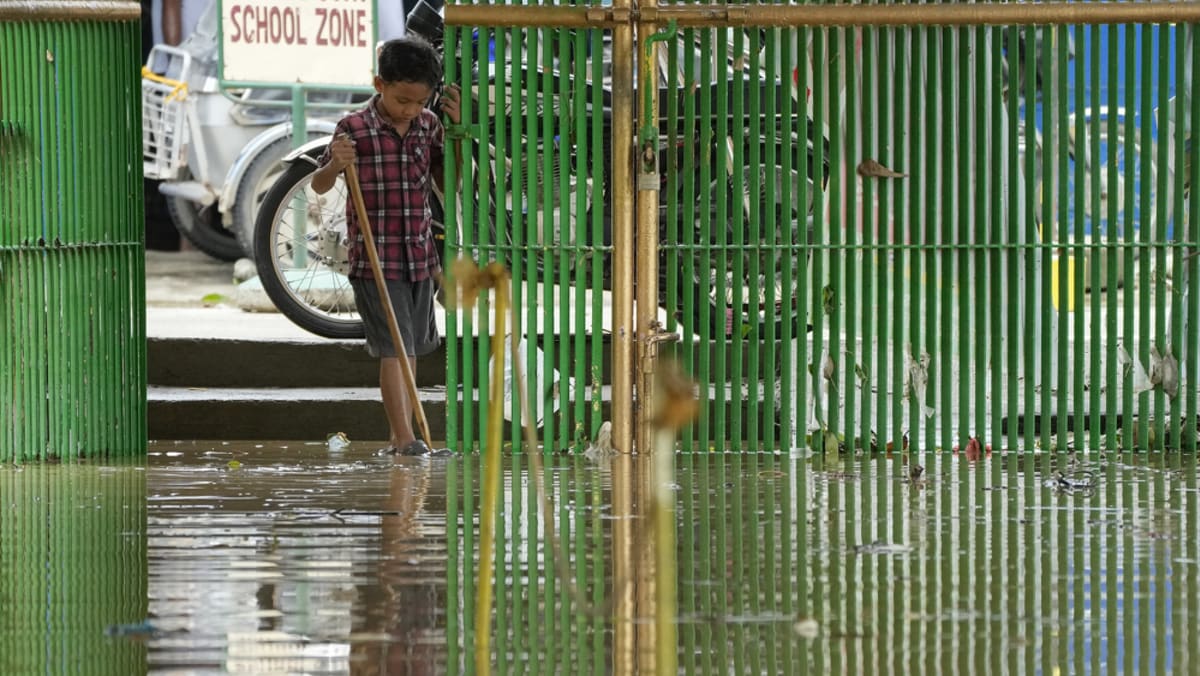
PAMPANGA AND TARLAC, the Philippines: A loss and damage fund that attracted millions of dollars in pledges as the world came together for the COP28 summit in Dubai may benefit communities on the brink of being wiped out as sea levels rise.
The fund aims to provide financial assistance to nations most vulnerable and impacted by the effects of climate change.
But as advocates push to make polluters pay and phase out fossil fuel, climate change-induced woes are already lived realities in many Philippine communities, including children there.
In Macabebe town in Pampanga province, a riverside island-community northwest of capital Manila, for instance, families prepare their children for floods during high tide, and classrooms are visibly damaged by recurring floods.
The Philippines tops the 2023 World Risk Index, which ranks 193 countries in terms of their vulnerability to extreme natural events.
The country is also is Southeast Asia’s most typhoon-prone country, hit by a yearly average of 20 typhoons.
To have a direct hand in bringing about change for its people, the Philippines wants to host the fund, hoping to have a seat on the Loss and Damage Fund Board and calling for its immediate operationalisation.
US next-gen tactical missile ready to point at China
The US Army has recently received the first batch of long-range Precision Strike Missiles (PrSM), marking a milestone for the service’s missile program and a significant upgrade in its tactical long-range strike capabilities and conventional deterrence.
The new missiles will provide Joint Force commanders with a 24/7, all-weather capability to counter adversaries’ ability to conduct combat maneuvers and air defense operations. Defense News reported the delivery follows successful production qualification testing at White Sands Missile Range, New Mexico.
The report says that the PrSM is a top US Army program and a key technology in the service’s long-range precision fires portfolio, created as part of its new wave of modernization priorities identified in 2017.
Reports indicate the missile can launch from both the M142 High Mobility Artillery Rocket System (HIMARS) and the M270A2 Multiple Launch Rocket System (MLRS).
Defense News notes that the US Army plans add-ons including an enhanced seeker and technology to increase lethality and extend range. The report mentions that Lockheed Martin and a Raytheon Technologies–Northrop Grumman team will compete for a subsequent phase of the PrSM program.
The US Army awarded Raytheon Technologies-Northrop Grumman a US$97.7 million contract in February 2023 to advance its design for a Long Range Maneuverable Fires program, planned to become the PrSM Increment 4 effort, while Lockheed received a US$33 million contract to develop the increment’s capability around the same time.
The PrSM is slated to replace the aging Army Tactical Missile System (ATACMS), which entered service in 1991. Breaking Defense notes in an article this month that the PrSM is designed to strike targets 500 kilometers away, far greater than the legacy ATACMS’s 70-300 kilometer range.

While Breaking Defense notes that the US Army has not disclosed exact ranges for the PrSM, it says that the missile has been tested against targets less than 85 kilometers and more than 400 kilometers away.
The report also mentions that while the PrSM is not primarily intended for targets less than 85 kilometers away, those targets present the most stressful flight environment as it maneuvers at hypersonic speeds to align with the target, testing the missile’s structural integrity and flight control.
An August 2020 Congressional Research Service (CRS) report states that the PrSM launcher could hold two missiles in a pod, compared to just one for ATACM, and is equipped with an anti-jam GPS antenna.
Breaking Defense notes in a November 2023 article that when the Pentagon released its 2024 fiscal budget, the US Army was planning to acquire 3,986 PrSM Increment I missiles.
Breaking Defense says that since the US sent older ATACMS missiles to Ukraine, the goal is most likely to increase PrSM production to backfill and eventually replace the ATACMS in the US inventory.
The report also says that the US Army is eying improved PrSM versions including the PrSM Increment 2 with the Land-Based Anti-Ship Missile (LBASM) seeker, the PrSM Increment 3 with enhanced warheads and a PrSM Increment 4 with a 1,000-kilometer range.
The PrSM will be a critical asset in the Pentagon’s “missile wall” strategy in the Pacific.
The PrSM could conceivably enable Taiwan to move from a defensive “porcupine strategy” entailing large numbers of small, mobile, concealed and dispersed assets that can survive initial Chinese strikes in the event of an invasion to a “pit viper” strategy entailing limited counterstrikes against targets on the Chinese mainland.
Asia Times has previously covered the US missile wall strategy, which centers around land-based missiles deployed on allied territories relatively close to Taiwan and China.
However, US allies may be reluctant to participate in America’s “missile wall” strategy for various reasons, not the least the risk of getting dragged into a US-China shooting war.
In November 2023, Asia Times reported that the US will deploy land-based Tomahawks, SM-6s and possibly the PrSM to the Pacific region in 2024. That planned missile deployment highlights US concerns over China’s military expansion and assertiveness in the region.
The PrSM may also provide Taiwan with counterstrike capabilities, addressing the limitations of its defensive porcupine strategy premised on repulsing a potential Chinese invasion rather than strategic-level deterrence.
In September 2023, Army Times reported that Taiwan had allocated funding to procure 29 HIMARS launchers, 864 precision-guided rockets and 84 ATACMS missiles. HIMARS would give Taiwan’s military survivable shoot-and-scoot capability to bombard Chinese beachheads in the event of an invasion while ATACMS would allow Taiwan to hit targets along China’s mainland coast.

However, China has already strengthened its defenses in anticipation of such attacks. Last month, The Wall Street Journal (WSJ) reported that China has significantly fortified a dozen airbases in its southern region with hardened and camouflaged shelters, extended runways and new fighter jet aprons.
These upgrades would potentially allow China to quickly establish air superiority in the event of a Taiwan invasion and make these bases critical targets for the US and Taiwan.
The WSJ report notes that China has deployed formidable air defenses and electronic warfare capabilities along its mainland coast, which may degrade the effectiveness of older munitions such as ATACMS.
The next-generation PrSM could thus bolster the US and Taiwan’s conventional deterrence posture, enabling the allies to continue holding critical Chinese targets at risk while giving space for synergizing conventional and extended deterrence.
N-Level results to be released on Dec 18
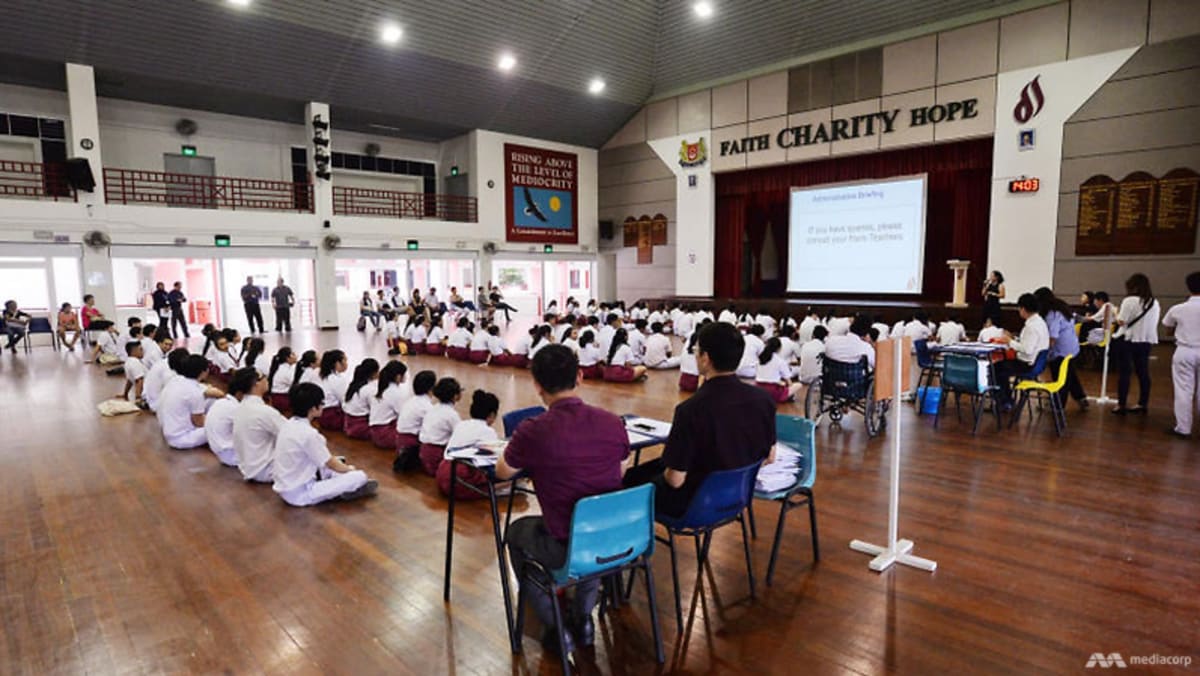
SINGAPORE: The results of the 2023 Singapore-Cambridge N-Level examinations will be released on Dec 18, the Ministry of Education (MOE) and the Singapore Examinations and Assessment Board (SEAB) said in a joint media release on Monday (Dec 11).
Candidates will receive their results from their secondary schools from 2pm. Details on collection arrangements will be shared by their respective schools.
“School candidates who are unwell should seek medical attention and not return to school to collect their results,” said MOE and SEAB, adding that those who are unable to collect their results in person can appoint a proxy to collect a physical copy of their results from the school.
Proxies must produce the relevant documents for the school’s verification when collecting the results. Candidates can contact their schools for assistance with the appointment of a proxy.
Private candidates eligible for Singpass can use their Singpass accounts to obtain their results online via SEAB’s Candidates Portal from 2.45pm on Dec 18.
Those not eligible for Singpass can view their results in the portal using the accounts they created when registering as candidates.
INSTITUTE OF TECHNICAL EDUCATION COURSES
Candidates applying for Institute of Technical Education (ITE) courses can submit their applications online via the ITE application portal between 2.30pm on Dec 18 and 5pm on Dec 21. Hard copy application forms will also be available at the three ITE colleges’ customer and visitor centres.
Those who wish to collect the physical application forms should book an appointment first by contacting the respective colleges.
Candidates can check interview details for courses offered under aptitude-based admissions via the ITE application portal on Dec 22 from 2pm.
ITE posting results will be released on at 9am on Dec 29, and candidates can check the posting results online via the ITE application portal.
Those who receive an ITE offer should log on to the portal between Dec 29 and Jan 3 to accept or reject the offer.
DIRECT-ENTRY-SCHEME TO POLYTECHNIC PROGRAMME
School candidates eligible for the Direct-Entry-Scheme to Polytechnic Programme (DPP) will receive a copy of Form N from their secondary schools, inviting them to apply for the programme.
DPP prepares students for progression into selected polytechnic diploma courses via a two-year Higher Nitec course at ITE.
Under the programme, those who complete their Higher Nitec course and attain the minimum qualifying grade point average are guaranteed a place in a polytechnic diploma course mapped to their Higher Nitec course.
Applications for the DPP can be submitted online via the ITE application portal between 2.30pm on Dec 18 and 5pm on Dec 21.
The DPP posting results will be released on Dec 22 at 2pm. Candidates can check the results via the ITE application portal.
Those who receive an offer should log on to the portal between Dec 22 and Dec 27 to accept or reject the offer.
Candidates who do not have a confirmed place in the DPP should report to their secondary schools next year for Secondary 5.
POLYTECHNIC-FOUNDATION-PROGRAMME
Students interested in applying for the Polytechnic Foundation Programme (PFP) should first start their Secondary 5 school year in 2024 while awaiting notification of eligibility and confirmation of a place in the programme.
The PFP is a diploma-specific foundation programme conducted over two academic semesters at the polytechnics, catering to Normal (Academic) students who have decided to pursue a polytechnic education and meet the programme eligibility requirements at the end of Secondary 4.
PFP applications will open in January 2024 on the day the O-Level results are released. Those eligible for the programme will receive a copy of Form P on the same day inviting them to apply.
EDUCATION AND CAREER GUIDANCE SERVICES
Students can consult their teachers or education and career guidance (ECG) counsellors in their respective secondary schools to help them plan their next steps, said MOE and SEAB.
They can also refer to the MySkillsFuture website to find out more about the education and career pathways available.
For courses and offerings at polytechnics and ITE colleges, students can refer to MOE’s CourseFinder website.
Students can also make an appointment with a counsellor at the ECG Centre at MOE by phone or online from Dec 11 to Dec 22.
Philippines says military chief was aboard ship Chinese vessels rammed in South China Sea
“DANGEROUS AND DESTABILISING” On Sunday, the US State Department called on China to halt its “dangerous and destabilising” actions in the sea, while foreign diplomats in Manila also criticised China’s behaviour. The confrontations at Scarborough Shoal and Second Thomas Shoal were the most intense between Philippine and Chinese vessels inContinue Reading
Philippines summons Chinese envoy over sea confrontations
China’s ramming and water cannoning of Filipino boats was a “serious escalation” of their tactics, Jonathan Malaya, assistant director general of the National Security Council, told reporters. China claims almost the entire South China Sea, including waters and islands near the shores of its neighbours, and has ignored an internationalContinue Reading
Australia to halve immigration intake by June 2025, fix ‘broken’ system
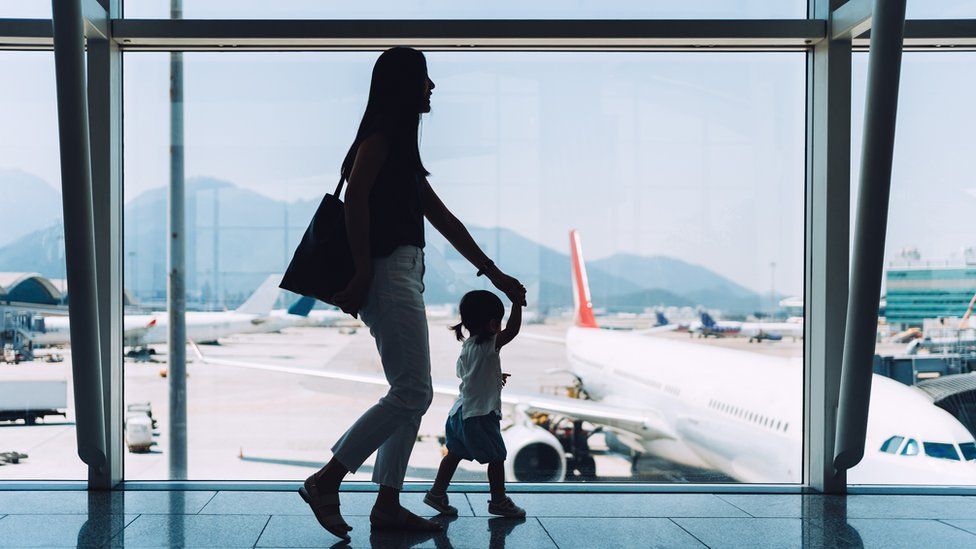 Getty Images
Getty ImagesThe Australian governmemnt says it will halve the migration intake within two years in a bid to fix the country’s “broken” immigration system.
The annual intake will be slashed to 250,000 – roughly in line with pre-pandemic levels – by June 2025.
Visa rules for international students and low-skilled workers will also be tightened under the new plan.
Migration has climbed to record levels in Australia, adding pressure to housing and infrastructure woes.
But there remains a shortage of skilled workers, and the country struggles to attract them.
Unveiling a new 10-year immigration strategy at a media briefing on Monday, Home Affairs Minister Clare O’Neil said the migration system had been left “in tatters” by the previous government.
A review earlier this year found the system was “badly broken” – unnecessarily complex, slow and inefficient – and in need of “major reform”, Ms O’Neil said.
A record 510,000 people came to Australia in the year to June 2023, but the minister said her government would “bring numbers back under control” and reduce the annual migration intake by around 50%.
Among the new measures are tougher minimum English-language requirements for international students, and more scrutiny of those applying for a second visa – they must prove that any further study would advance their academic aspirations or their careers. There are some 650,000 foreign students in Australia, with many of them on their second visa, according to official data.
The visa pathways for migrants with “specialist” or “essential” skills – like highly-skilled tech workers or care workers – have also been improved to offer better prospects of permanent residency.
The new policies will attract more of the workers Australia needs and help reduce the risk of exploitation for those who live, work and study in the country, Ms O’Neil said.
In response, opposition migration spokesman Dan Tehan said the government had been too slow to adjust migration policies designed to help Australia recover from the pandemic.
“The horse has bolted when it comes to migration and the government not only cannot catch it but cannot find it,” he said on the weekend.
In recent weeks, the government has been under pressure from some quarters to temporarily reduce migration as Australia struggles with a housing crisis driven by a lack of supply.
However others, like the Business Council of Australia, have said migrants are being used as a scapegoat for a lack of investment in affordable housing and decades of poor housing policy.
Related Topics
-
-
2 September 2022
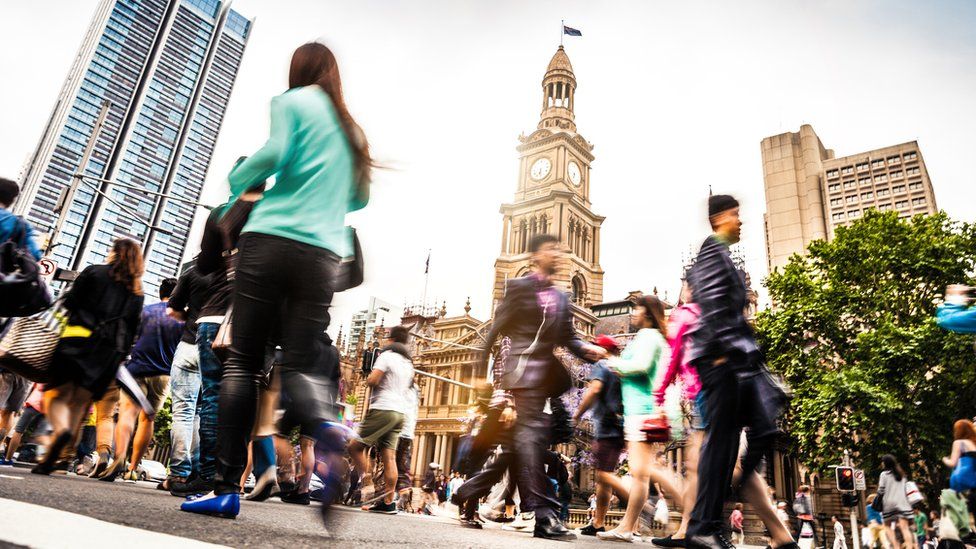
-
Lim Tean’s trial delayed again as opposition politician comes down with gastroenteritis
At the start of the hearing, Deputy Public Prosecutor Edwin Soh addressed the court and called this another one of Mr Lim’s “delay tactics”, as the trial had been originally fixed to begin on Aug 29. After that date, Mr Lim had discharged his counsel and was granted an adjournmentContinue Reading

